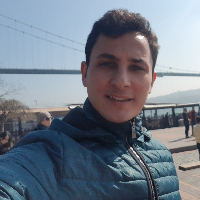Analysis of political, social and cultural interactions between the cultural traditions of Uruk, Kura Aras and Ninevite V in the north west and east of central Zagros
Author(s):
Article Type:
Research/Original Article (دارای رتبه معتبر)
Abstract:
Northwest Iran, on the one hand, is linked to the regions of the Transcaucasus, Anatolia and Mesopotamia, and on the other hand has links with Central Plate and East Central Zagros. Therefore, this region is always the center of the intersection of different ethnic groups with different ethnic and cultural structures.In the 4th millennium BC and the early 3rd millennium BC, with the complexity of economic and social relations between societies, we face a different form of economic, political and cultural interactions in the Mesopotamia, Anatolia, the Caucasus and the Iranian plateau. At that time, along with the formation of the Uruk culture and the expansion of the influence of Mesopotamian communities in its main climbs, there were Transcaucasian cultures fluctuations in the highlands and mountainous areas of the north and east of the valleys of the Tigris and Euphrates of the . At the same time, in the Uremia Lake basin, a cultural gap is between Hasanlu VIII / the late Chalcolitic period / Pisdeli (in horizon with Obaid and the early Uruk in Mesopotamia) and Hasanlu VII / the early Bronze Age (simultaneously with the culture of kura Arax II-III in the north of the Urmia lake, the culture of painted orange pottery/ POW is observed in the south of the Urmia Basin and the early dynasties and the Akad in Mesopotamia). Therefore, the transfer from Hasanlu VIII to Hasanlu VII is an important discussion in the prehistory of the region. On the other hand, according to relations Uruk culture, Kura Arax and orange painted pottery culture In some cases, the study of cultural distribution and interactions is important in this period. The importance of this research is for Not only for study the cultural relations of this people in the prehistory of this region, but also affects the status of the region in the cultural-economic exchanges between the Iranian plateau and the Caucasus and Mesopotamia
Keywords:
Language:
Persian
Published:
Iranian Archaeological Research Journal, Volume:10 Issue: 25, 2020
Pages:
69 to 90
https://magiran.com/p2181316
سامانه نویسندگان
مقالات دیگری از این نویسنده (گان)
-
Archaeology of Qara Dagh: Preliminary Report of the Survey of the Bronze and Iron Age Sites in Varzeqan Region (Iranian Azerbaijan)
, Alireza Hejebri Nobari *, Erkan Konyar
Journal of Archaeological Studies, -
Explaining of the concepts and social symbols (social structure) of the Iron Age societies; Case study: Tabriz Blue Mosque cemetery
Ali Reza Hejebri Nobari *, , Fatemeh Mokhtaripour, Behzad Mehdizadeh
Iranian Archaeological Research Journal,



